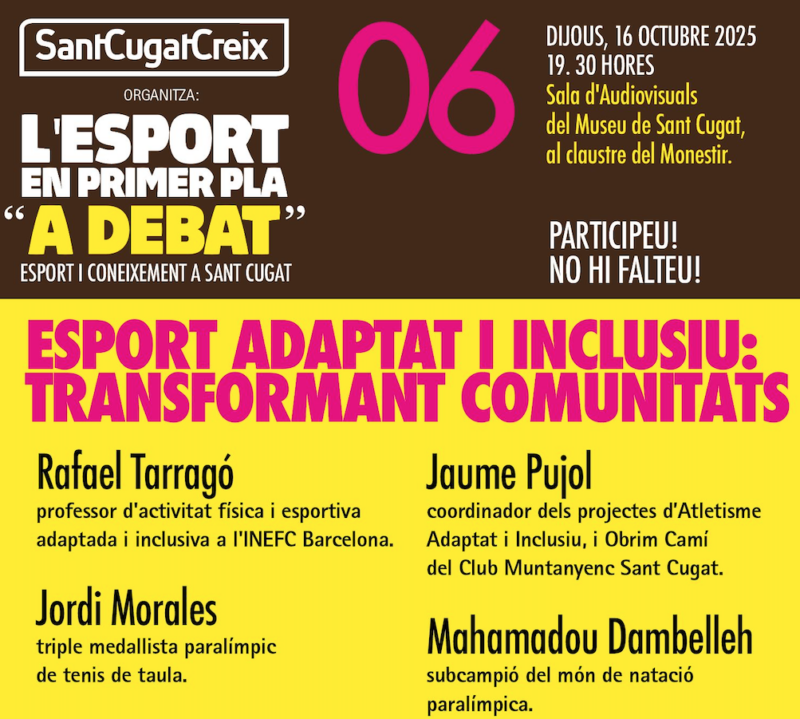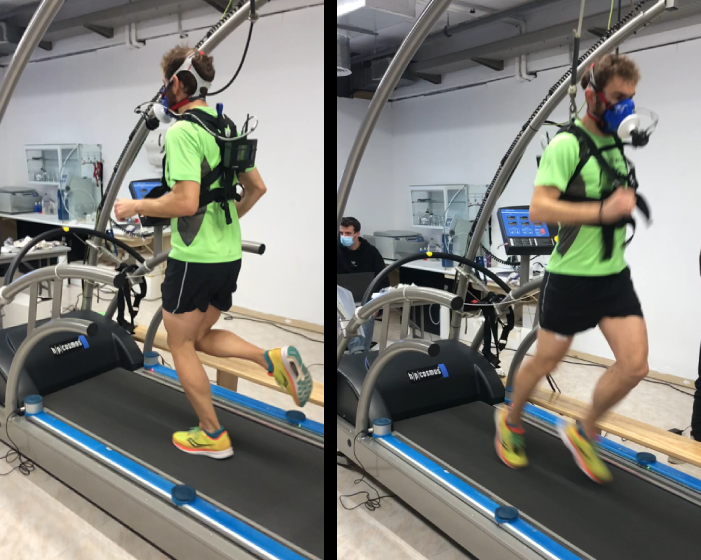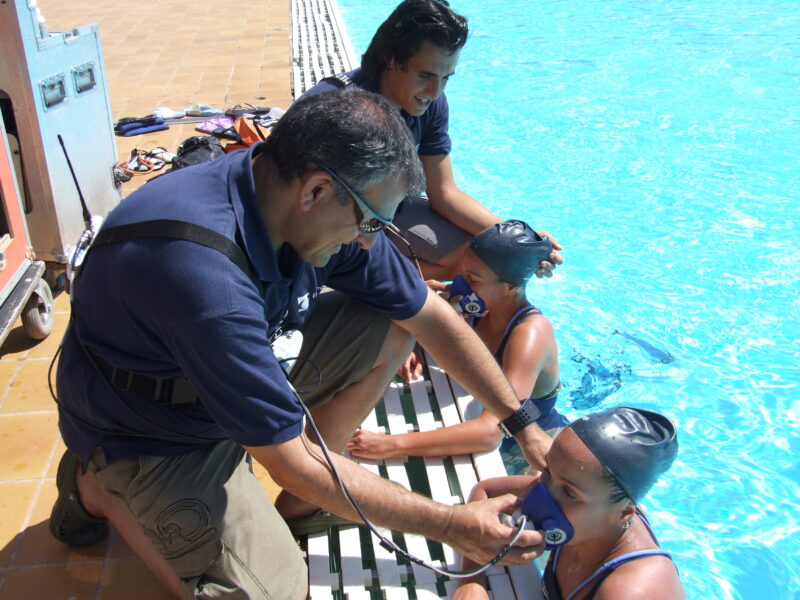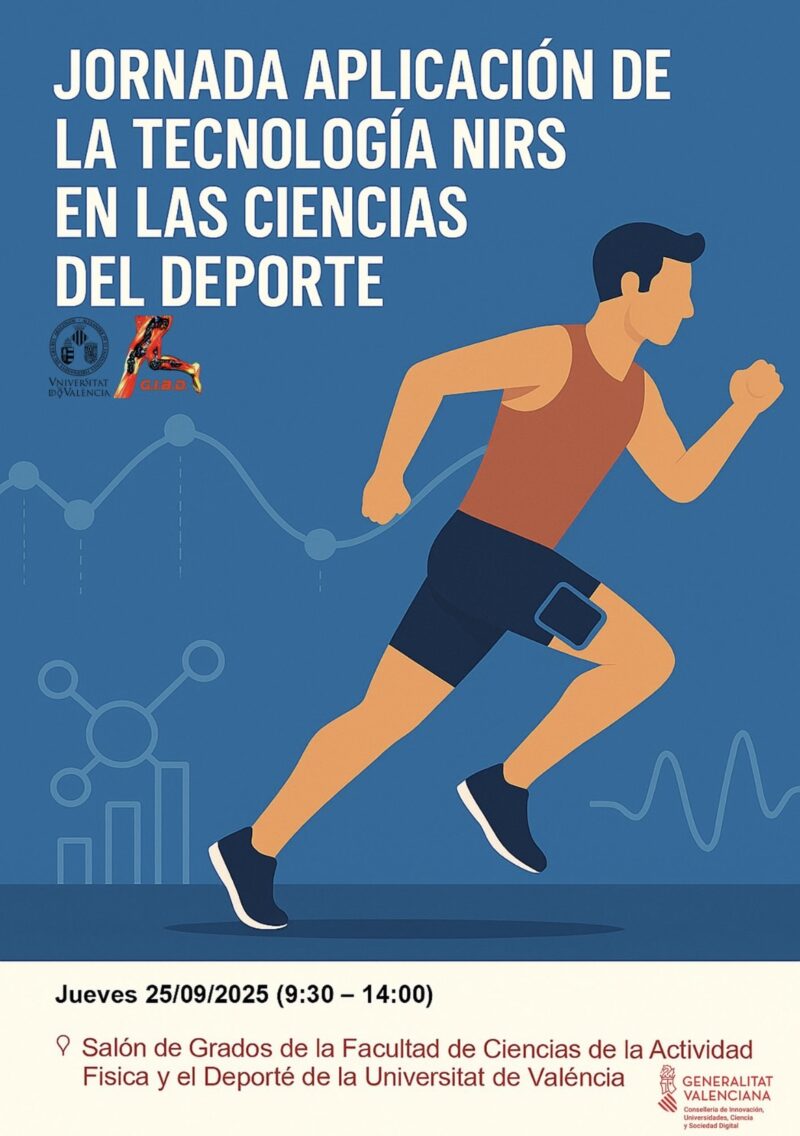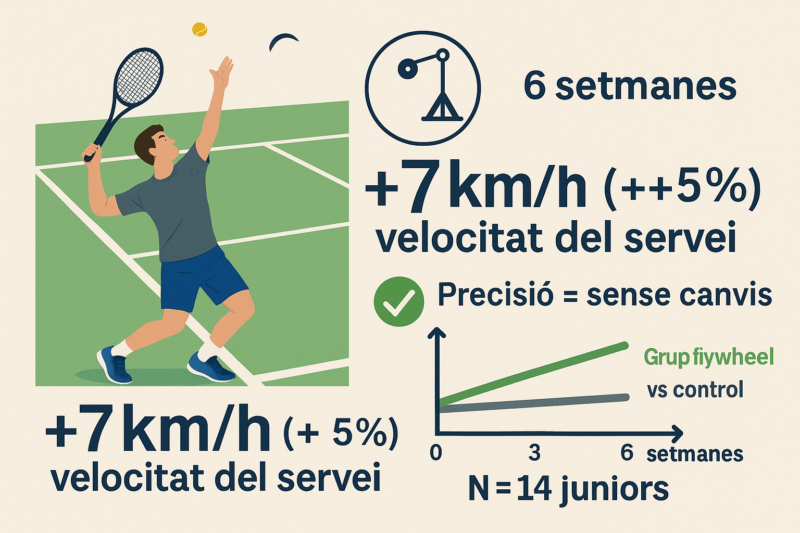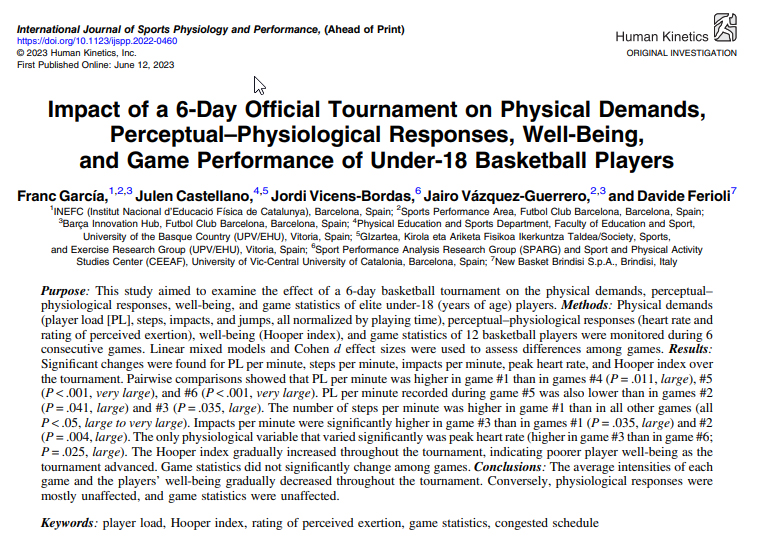
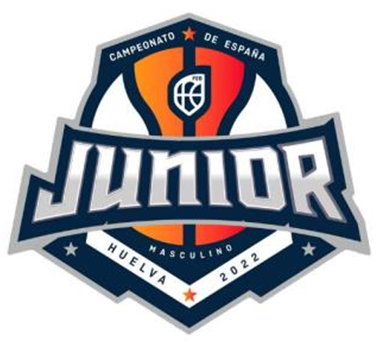
El nou membre del nostre grup de recerca, en Franc García, acaba de publicar conjuntament amb professionals i investigadors reconeguts en l’àmbit nacional i internacional com el Julen Castellano, el Jordi Vicens, el Jairo Vázquez i el Davide Ferioli, un nou article a la revista International Journal of Sports Physiology and Performance (IJSPP): “Impact of a six-day official tournament on physical demands, perceptual-physiological responses, well-being, and game performance of U-18 basketball players”.
García, F., Castellano, J., Vicens-Bordas, J., Vázquez-Guerrero, J. & Ferioli, D. (2023). Impact of a six-day official tournament on physical demands, perceptual-physiological responses, well-being, and game performance of Under-18 basketball players. International Journal of Sports Physiology and Performance, Ahead of Print.
L’article es troba en situació de Ahead of Print, el que indica que es tracta d’un article original que ja ha estat revisat i acceptat per la revista, però resta pendent d’assignar el número i paginació, o URL definitiva. La idea d’aquesta opció de Ahead of Print és posar a disposició els articles des del moment en què aquests han acabat el procés de revisió, acceptació i edició, fent el contingut accessible i ja citable.
ABSTRACT:
Purpose: This study aimed to examine the effect of a six-day basketball tournament on the physical demands, perceptual-physiological responses, well-being, and game statistics of elite U-18 players.
Methods: Physical demands (Player Load [PL], steps, impacts, and jumps, all normalized by playing time), perceptual-physiological responses (heart rate [HR] and rating of perceived exertion [RPE]), well-being (Hooper index), and game statistics of 12 basketball players were monitored during six consecutive games. Linear mixed models and Cohen’s d effect sizes were used to assess differences among games.
Results: Significant changes were found for PL·min-1, steps·min-1, impacts·min-1, HRpeak, and Hooper index over the tournament. Pairwise comparisons showed that PL·min-1 was higher in game #1 than in games #4 (P=0.011, large), #5 (P<0.001, very large), and #6 (P<0.001, very large). PL·min-1 recorded during game #5 was also lower than PL·min-1 in game #2 (P=0.041, large) and #3 (P=0.035, large). The number of steps·min-1 was higher in game #1 than in all other games (all P<0.05, large-to-very large). Impacts·min-1 were significantly higher in game #3 than in games #1 (P=0.035, large) and #2 (P=0.004, large). The only physiological variable that varied significantly was HRpeak (higher in game #3 than in game #6; P=0.025, large). The Hooper index gradually increased throughout the tournament, indicating poorer player well-being as the tournament advanced. Game statistics did not significantly change among games.
Conclusions: The average intensities of each game and the players’ well-being gradually decreased throughout the tournament. Conversely, physiological responses were mostly unaffected, and game statistics were unaffected.
Keywords: Player Load, Hooper index, rating of perceived exertion, game statistics, congested schedule.

